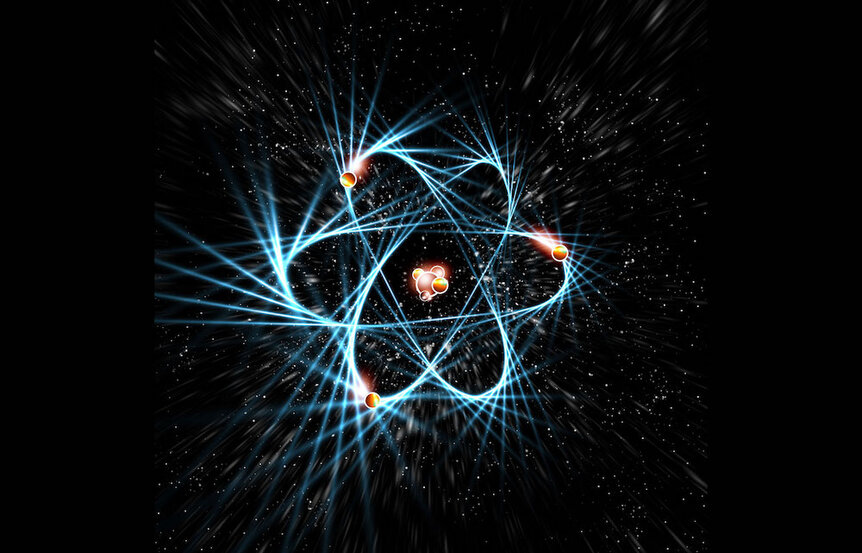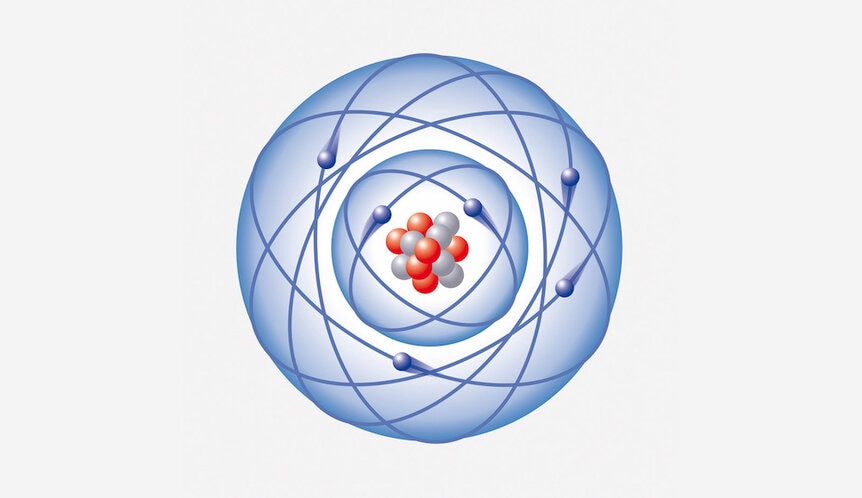Create a free profile to get unlimited access to exclusive videos, sweepstakes, and more!
Nuclear Clocks Could Unlock Secrets of the Universe
Scientists are working on the development of nuclear clocks, which would be more accurate than atomic clocks.

When J. Robert Oppenheimer and crew set to work at Los Alamos, they were largely focused on the destructive potential of the atom. By the time they were finished, they had succeeded in making the most powerful bomb (at the time) ever created. They also set the atomic age into motion. Catch Christopher Nolan's vision of how that happened in Oppenheimer, in theaters now!
The invention of nuclear weapons means we've spent the last half-century counting the minutes to midnight on the Doomsday Clock. It also means we've been able to count those minutes more accurately than ever, thanks to atomic clocks. And there are even more accurate nuclear clocks coming down the pipe.
Unlocking Atomic Time
All you really need to make a clock is something which ticks or oscillates at regular intervals, and something else which can count those ticks or oscillations. Mechanical clocks use a swinging pendulum, but there's no reason you couldn't track time passing in the number of wiggles per womble, instead of seconds and minutes.
RELATED: MIT's Quantum Entangled Atomic Clock Could Still be Ticking After Billions of Years
Throughout human history, we have been reliant on a number of different technologies to track the passage of time, each of which has its own limitations. Even modern analog clocks have small discrepancies which stack up over time until you realize that your clock is several minutes off of true.
Atomic clocks also have discrepancies, but they're so small that it's almost not worth thinking about them. Instead of the swaying of a pendulum, atomic clocks work by watching the predictable oscillations in an atom. When exposed to the right frequency of energy, electrons in an atom jump back and forth between energy states. Those state changes happen at regular intervals, making them useful for timekeeping.
Atomic clocks are so accurate, in fact, that if we had started one up at the moment of the Big Bang and kept it running for the last 13.8 billion years, it would still be accurate to within a second.
Building an Even Better Nuclear Clock
Some might feel that less than a second of drift over tens of billions of years is as good as clocks ever need to be. Figuring out an even more accurate way to keep time feels almost like a solution looking for a problem. Even if it is, though, that's okay.
Scientists didn't really know what they were going to do with atomic clocks before they built them, and they've been incredibly useful. The development and ubiquity of GPS navigation systems relies heavily on atomic clocks, which calculate the transit time of light between you and the satellite array to determine your position.
Nuclear clocks could offer time-keeping several orders of magnitude more accurate than atomic clocks, according to a new study published in the journal Nature.
Nuclear clocks, theoretical as they might be, work on a similar foundation as atomic clocks, by striking a specific material with a specific frequency of energy and watching what happens. The basic premise is to smack an atom of thorium-229 with a laser, get it all excited, then measure how much energy comes off of it as it falls back to its baseline state.
The trouble is that thorium is hard to get your hands on and the exact frequency needed for excitation isn't yet clear. In experiments, researchers started by smashing some high-energy protons into some uranium. That produces small amounts of francium and radium, both of which are "grandparents" of thorium, meaning they eventually decay into thorium after a couple of chemical generations.
RELATED: Scientists Confirm Time Moved More Slowly in the Early Universe
The francium and radium decay into actinium-229, which in turn decays into thorium-229. When that happens, researchers can see the energy frequency emitted, the same frequency needed to excite thorium for our nuclear clock.
There's still a lot of work to do. We need a better understanding of thorium, and we'll also have to develop new lasers which operate at the identified frequency to rustle up our thorium timepiece.
The race to build a nuclear clock is on, and it's almost guaranteed that the world will look a little different on the other side of that breakthrough. That tends to happen when you unlock the inner workings of the atom.
Catch one of the most dramatic displays of nuclear power in Oppenheimer, in theaters now!




























